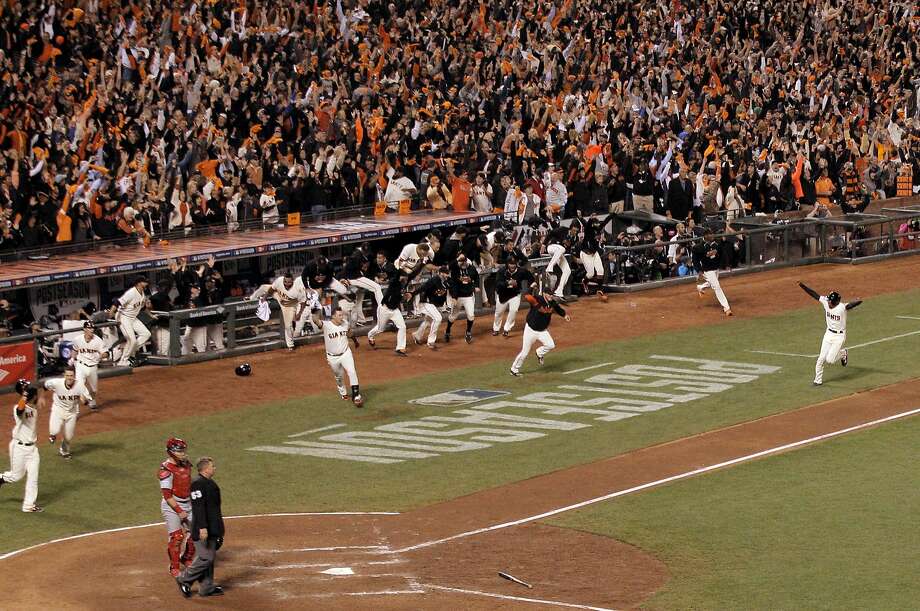 |
| The Giants Win The Pennant |
A few things have remained constant over the years. Starting pitching, solid defense, and depth. But when every team is effectively even, what wins games? Previously, it was the guys with the PEDs and the muscles and the giant heads who could hit balls out of any park in prodigious numbers. Take that away, and teams needed to figure out how to build, not just for the 162 game regular season, but for the short, brutal sprint of the post-season.
The operative assumption is that fewer runs will be scored. Games will be closer, and balls in play start to matter a great deal more. Conventional wisdom has to go out the window - you don't want to see a lot of pitches and get deep in the count. You want to put the ball in play, use the whole field and put pressure on the defense. Giants hitting coach Hensley Meulens preaches it every day - a flat swing that stays in the zone a long time, taking what the pitcher is giving you, using the whole field. It's not about a bloop and a blast, it's about a bloop and line drive and a bunt and a fly ball.
But assuming decent starting pitching, the real fight is the bullpens. The bullpens give managers the tools to neutralize rallies, and to shut down the big hitters. Relief pitchers have become professional specialists, and the weapons that managers use to negotiate the late innings and either hold a lead or keep the game close. And even better, we've learned that a disastrous start doesn't have to mean a loss, as a 'long man' like Yusmero Petite or Tim Lincecum can give you six innings and give the team a chance to win that game.
So now we have the very first true post-steroid era World Series. You have the Giants, looking for their third championship in five years. A team built as a reflection of their home field, a place where it's hard to hit home runs. A team built on pitching, defense and a "keep-the-line-moving" offense that feeds off of putting the ball in play and running the bases with intelligence and bravado. And you have the Royals, a team that built a decent starting rotation, a lights-out bullpen and a huge surfeit of team speed. Offenses will be fun to watch, with the Giant's 'ground attack' against the Royals speed on the bases. The Giants probably have the advantage in starting pitching, but the Royals bullpen might offset that. The Royals suffer when they come west, as they'll lose a hitter and have to bat their pitcher. The Giants in KC will have a natural DH for the first time in the last couple of post-seasons, with Michael Morse a natural power hitter off the bench.
The formula for both teams will be to score early and hold that lead. The nightmare scenario is a tie late and long, long extra-inning game like the crazy 18 inning game the Giants played in DC. But just as the real strength of both teams is their bullpen, it will only take one bullpen meltdown to tip the series irrevocably to one side or the other. Live by the sword, die by the sword. This has the potential to be the most intense, exciting world series in recent years. The 2010 series against the Rangers had some hope, but the 2012 sweep of the Tigers was fun, but it wasn't particularly fun to watch. This might very well be something altogether different.
...
No comments:
Post a Comment